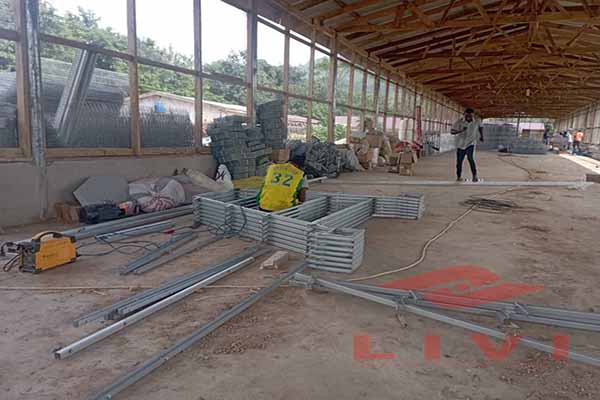Optimizing the Purchase Budget for Chicken Farm Automation Equipment in Uganda
Time : 2025-06-28
In the ever-evolving agricultural landscape, the poultry industry is witnessing significant advancements, especially in the field of automation. Uganda, like many other African countries, is stepping up its game in terms of modernizing its chicken farms. This article delves into the intricacies of purchasing automation equipment for chicken farms in Uganda, focusing on budget optimization.
Introduction to Chicken Farm Automation
Automation in chicken farming involves the use of technology to streamline operations, reduce human labor, and enhance productivity. This includes the use of automatic feeding systems, lighting, environmental control, and monitoring systems. The adoption of automation not only increases efficiency but also ensures the health and well-being of the chickens.
Understanding the Purchase Budget
Before diving into the specifics of equipment purchase, it is crucial to understand the budget constraints. The purchase budget for automation equipment in a chicken farm in Uganda should consider several factors:
– Initial Investment Cost: The total cost of acquiring the necessary automation equipment.
– Operational Costs: Regular maintenance, energy consumption, and labor savings.
– Scalability: The ability to expand the automation system as the farm grows.
– ROI (Return on Investment): The expected financial gains from implementing the automation system.
Types of Automation Equipment for Chicken Farms
When it comes to purchasing automation equipment, there are several key areas to focus on:
1. Feeding Systems
Automatic feeding systems are essential for ensuring a consistent diet for the chickens. These systems can include:
– Semi-Automatic Feeders: Designed for smaller farms, these feeders can be manually refilled and set to dispense feed at regular intervals.
– Fully Automatic Feeders: Ideal for larger farms, these systems can be programmed to dispense precise amounts of feed, reducing waste and labor.
2. Environmental Control Systems
Maintaining optimal temperature, humidity, and air quality is crucial for chicken health. Environmental control systems may include:
– Ventilation Units: To regulate airflow and CO2 levels.
– Humidity Control Systems: To maintain the desired humidity level.
– Heating and Cooling Systems: To ensure the chickens are comfortable year-round.
3. Lighting Systems
Lighting plays a significant role in the laying cycle of hens. Automation equipment for lighting can include:
– Timed Lighting Systems: To simulate natural daylight and regulate the laying cycle.
– Energy-Efficient Lights: To reduce energy consumption and operating costs.
4. Monitoring and Data Systems
Modern chicken farms benefit from real-time monitoring systems that provide insights into the health and behavior of the chickens:
– Sensor Networks: To track environmental conditions and chicken activity.
– Data Analytics Software: To analyze collected data and make informed decisions.
Budget Optimization Strategies
Optimizing the purchase budget for chicken farm automation equipment involves strategic planning and decision-making. Here are some key strategies:
1. Conduct a Thorough Needs Assessment
Before making any purchases, conduct a comprehensive needs assessment. Determine the specific requirements of your farm, including the size, number of chickens, and the stage of production.
2. Prioritize Your Needs
Not all automation equipment is equally important for every farm. Prioritize the equipment based on its impact on productivity and efficiency.
3. Consider Used or Reconditioned Equipment
Instead of buying new equipment, consider purchasing used or reconditioned systems. This can significantly reduce the initial investment cost.
4. Seek Grants and Subsidies
In Uganda, there are various government initiatives and international organizations that provide grants and subsidies for agricultural modernization. Exploring these options can help offset the cost of automation equipment.
5. Leverage Technology Partnerships
Forming partnerships with technology providers can lead to better pricing and bundled deals. These providers may also offer leasing options or financing arrangements that fit within your budget.
Conclusion
Investing in automation equipment for a chicken farm in Uganda is a strategic move towards enhancing productivity and sustainability. By understanding the purchase budget, evaluating the types of automation equipment, and employing budget optimization strategies, chicken farmers can make informed decisions that will benefit their operations in the long run.
Tags












